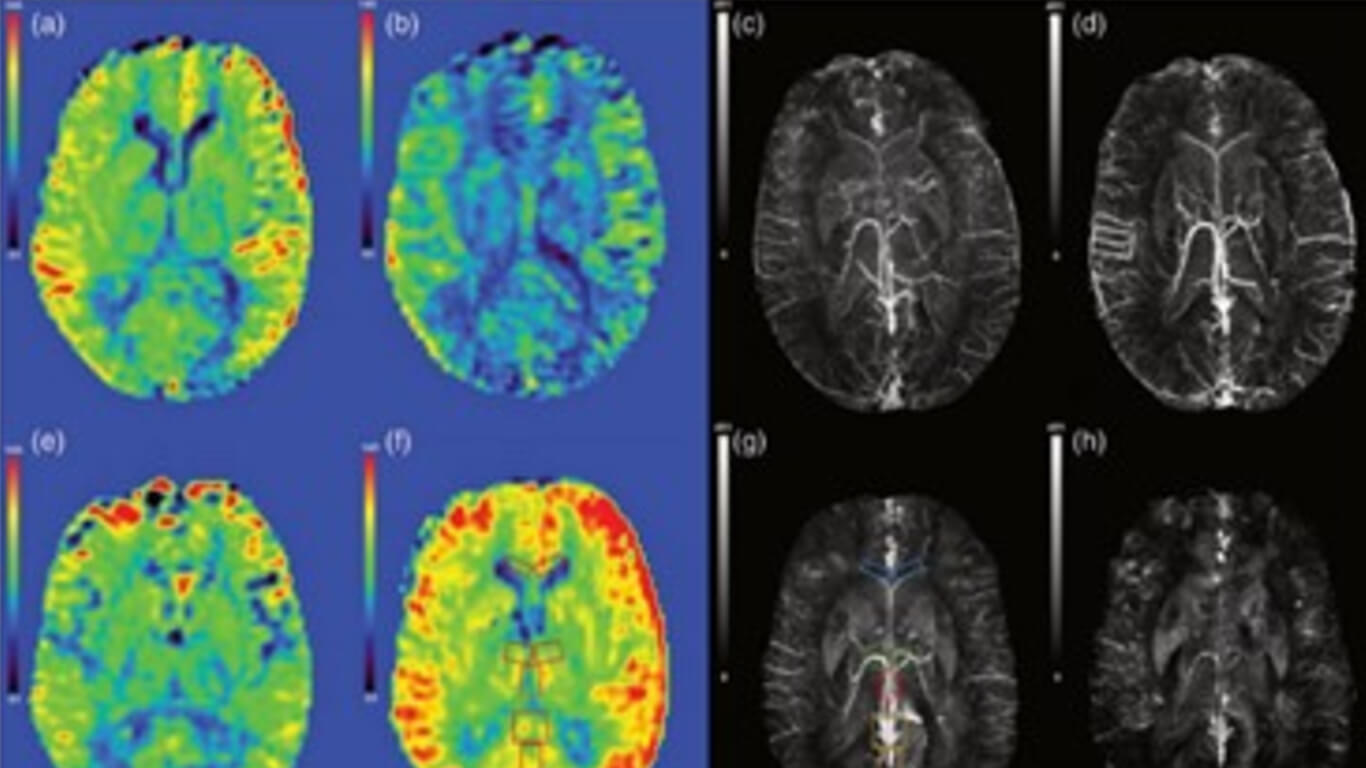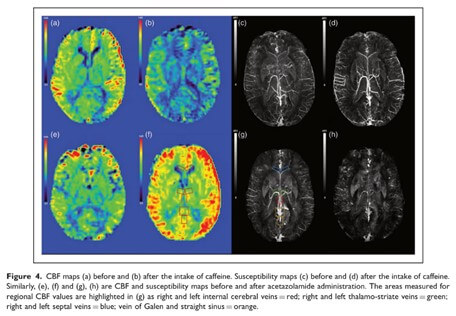
Quantifying the changes in oxygen extraction fraction and cerebral activity caused by caffeine and acetazolamide
By: Karen Holzberger, President & CEO of SpinTech MRI
Author(s): Sagar Buch1 , Yongquan Ye2 and E Mark Haacke1,2
Journal: Journal of Cerebral Blood Flow & Metabolism
Published: 2017
Read Full Paper: https://journals.sagepub.com/doi/full/10.1177/0271678X16641129
Abstract

A quantitative estimate of cerebral blood oxygen saturation is of critical importance in the investigation of cerebrovascular disease. We aimed to measure the change in venous oxygen saturation (Yv) before and after the intake of the vaso-dynamic agents caffeine and acetazolamide with high spatial resolution using susceptibility mapping.
Method
Caffeine and acetazolamide were administered on separate days to five healthy volunteers to measure the change in oxygen extraction fraction. The internal streaking artifacts in the susceptibility maps were reduced by giving an initial susceptibility value uniformly to the structure-of-interest, based on a priori information.
Results
Using this technique, Yv for normal physiological conditions, post-caffeine and post-acetazolamide was measured inside the internal cerebral veins as YNormal = 69.1 ± 3.3%, YCaffeine = 60.5 ± 2.8%, and YAcet = 79.1 ± 4.0%. This suggests that susceptibility mapping can serve as a sensitive biomarker for measuring reductions in cerebro-vascular reserve through abnormal vascular response. The percentage change in oxygen extraction fraction for caffeine and acetazolamide were found to be +27.0 ± 3.8% and −32.6 ± 2.1%, respectively. Similarly, the relative changes in cerebral blood flow in the presence of caffeine and acetazolamide were found to be −30.3% and + 31.5%.
Conclusions
The collected data suggests that the cerebral metabolic rate of oxygen remains stable between normal and challenged brain states for healthy subjects.

